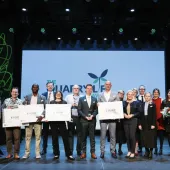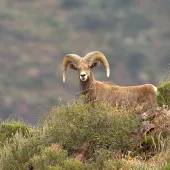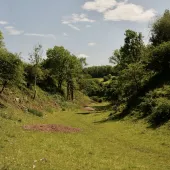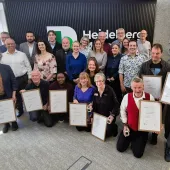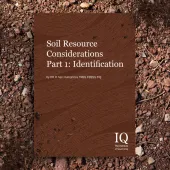Protecting Natural Resources
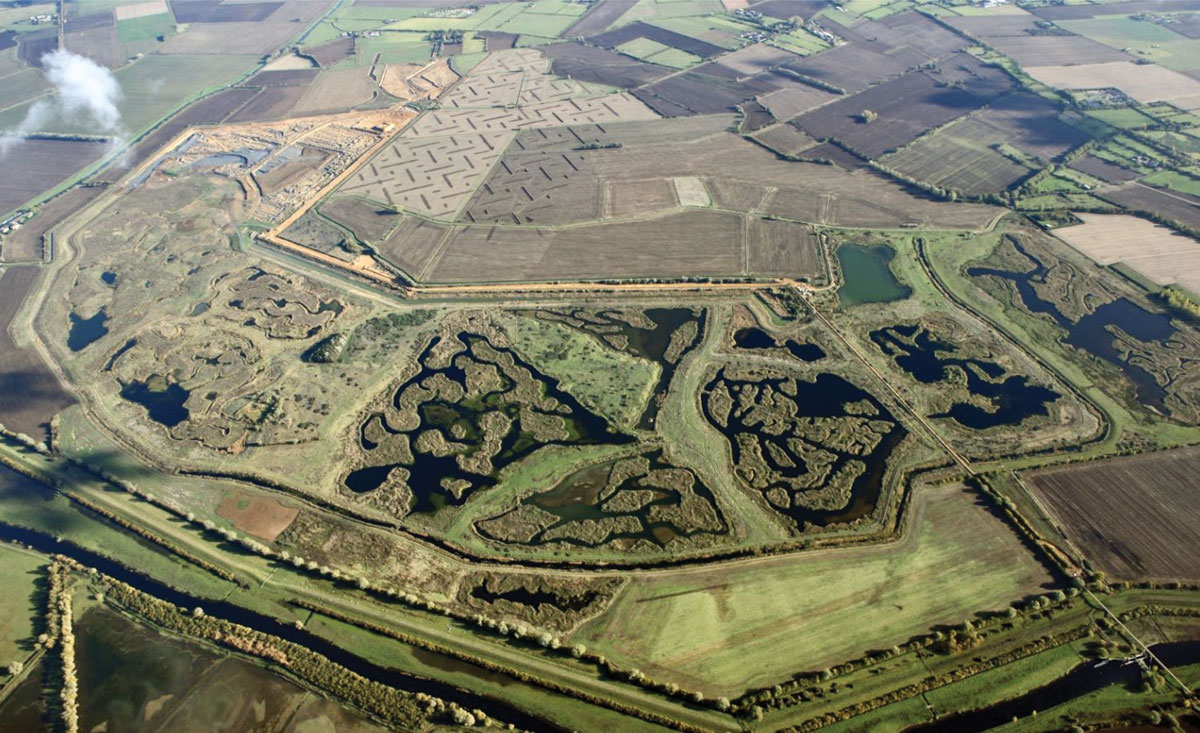
First published in the May 2021 issue of Quarry Management
Hanson outline how they are helping to enhance the environment through restoration and habitat creation
Hanson’s aim is to be a leading sustainable business, trusted and respected by its stakeholders for the ethics it adopts and the products it supplies. Protecting natural resources and enhancing the environment form part of this commitment and the company recognizes that biodiversity and geodiversity are essential components of sustainable development.
Working in partnership with statutory and non-statutory bodies, at both a local and national level, has helped Hanson implement best practice to enhance and improve the biological value of their quarrying sites, which all have biodiversity action plans in place.
A number of the company’s former workings have also become important conservation or educational areas, with more than 80 designated Sites of Special Scientific Interest (SSSI). In addition, Hanson have developed Memorandums of Understanding with both Natural England and Countryside Council for Wales, which recognize the importance of biodiversity and geodiversity.
Hanson’s parent company, HeidelbergCement Group, has signed the Leadership Declaration on Biodiversity and was the first company in the industry to adopt a group guideline for the promotion of biodiversity at its mineral extraction sites worldwide.
Biodiversity refers to the depth and breadth of flora and fauna and is directly associated with habitat. Hanson have invested heavily to ensure both their working and former quarries are restored to the best-possible after-use and, over the years, their sites have provided habitats and unique living conditions for an abundance of wildlife, including rare and protected species.
Geodiversity covers the variety of rocks, fossils, minerals etc, as well as the natural processes that shape the landscape. Quarrying offers a unique opportunity to study this, allowing an understanding of the earth’s history and how life has evolved to help us manage our environment. Examples include uncovering dinosaur bones and learning more about the last Ice Age by studying well-preserved sediments.
Raising awareness of the biodiversity value of quarrying sites
Every three years HeidelbergCement run The Quarry Life Award, an international competition to raise the understanding of the biological value of quarrying sites both during and after extraction and to share new best practices.
This year marks the start of the fifth edition of the biodiversity competition, which is being held in more than 20 countries across the globe and aims to increase the understanding of the interaction between nature and quarries, as well as contributing to global nature conservation goals in raising the awareness of the importance of biodiversity and bringing people closer to nature.
The competition will launch this month (May) and, at a national level, has two streams: research and community, both of which offer a £5,000 top prize.
The research stream focuses on scientific projects that increase knowledge of quarry-specific ecology and/or lead to improved biodiversity, landscape or water management. It is aimed principally at academics, scientists and research groups. The categories cover biodiversity management, habitat and species research and a section called ‘beyond quarry borders’. Hanson sites participating in the 2022 contest are set to be announced in the coming weeks.
The community stream is for projects that educate about biodiversity in quarries or help the quarry to better connect with its neighbours and raise awareness among the wider general public of the biodiversity at extraction sites. This stream is open to everyone – individuals, students, schools and community groups.
National winners are put forward into the international stage of the competition, with prizes awarded in the following categories: biodiversity management, habitat and species, beyond quarry borders, biodiversity and education, connecting quarries and local communities, and nature-based solutions. The projects judged to be the best in each of these six categories will each receive a prize of £8,700 (€10,000), with the best project overall receiving no less than a total of £26,000 (€30,000).
The deadline for submitting outline proposals is 18 November 2021. A panel of experts will select six of the proposals to become projects to be carried out at Hanson sites between January and September 2022. The UK winners will be chosen by a national jury and share a prize fund of £10,000, and will also go forward to the international competition.
Stewart Jones, national sustainability manager at Hanson UK, said: ‘Our aim is to encourage projects which can support or enhance the work we are already doing to improve biodiversity and the quality of restoration at our sites. We also want to hear from people who have ideas which will create a better understanding of the importance of quarrying and its vital role in improving the built environment.
‘The award has increased the dialogue with academics, NGOs and our local communities which, in turn, is helping to inform the development of biodiversity action plans at all our sites.’
Partnership working at Ouse Fen
To mark 20 years of Hanson’s wetland project with the RSPB at Ouse Fen, in Cambridgeshire, the company has transferred a further 80ha of restored land from its Needingworth Quarry to the nature reserve.
Hanson’s partnership project with the RSPB is the largest planned nature conservation restoration scheme of its kind in Europe and, once complete, the reserve will incorporate the UK’s largest created reed bed – an extremely rare habitat – much of which has been lost in Britain.
RSPB Ouse Fen is now 298ha, nearly 3km2, and, by the time the project is complete in 2030, will be more than double this size.
RSPB senior project manager Jonathan Taylor said: ‘This project is a great example of how industry and the conservation sector can deliver sustainable projects for the local economy, society and the environment.
‘It shows how collaborative work taking place in a long-term partnership can deliver bigger and better habitat restoration through a project of this vast size. The wetland species that have established themselves at RSPB Ouse Fen are proof of the quality of the habitat that this project has restored over the last 20 years, and nature continues to drive us to deliver more wetland by moving into newly restored areas even before they are completely finished.’
RSPB Ouse Fen is already home to a nationally important population of bitterns, as well as other iconic wetland wildlife including marsh harriers, bearded tits, otters and water voles. The project also provides significant benefits for local people by allowing them to get closer to wildlife and greenspace. New visitor access, including two new trails, is due to be opened later this year and ultimately there will be 32km of public access around the site.
- Subscribe to Quarry Management, the monthly journal for the mineral products industry, to read articles before they appear on Agg-Net.com


